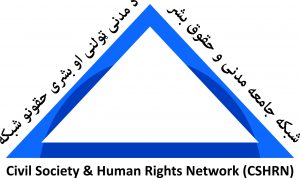The Civil Society and Human Rights Organisation (CSHRO) organizes its educational manual on the international mechanism of human rights. Afghanistan State as member state of the United Nation has ratified several international human rights conventions. Its important that the state of Afghanistan deliver periodic reports of the human rights situation to the UN system based on the requirements of these conventions. The same time the civil society response to the international human rights convention is also dependence on the state report to the international human rights structures.
The CSHRO works to provide an educational manual on the international mechanism of human rights for the civil society actors, Afghan state institutions and human rights activists. The manual will be produced during upcoming one year. Based on the strategy of CSHRO on May 24 th a consultative gathering of CSHRO member organizations will discus the structure and methodology of the manual. During the gathering a working group of Afghan civil society experts will be designed. The working group will work in collaboration of Danish Institute for Human Rights experts to develop the first draft of educational manual. The DIHR experts will provide international experiences to the working group. The CSHRO Executive Secretariat facilitates the activities of working group. The working group shares the first draft of the manual to member organistions and some national experts to enhance the quality of the manual. The final draft of the manual will be presented to member organizations during the second consultative gathering on January 2013. The second gathering of CSHRO will approve the manual.
The manual will be printed by CSHRO. A team of trainers will be trained by CSHRO in order to train manual in Kabul and provinces of Afghanistan . The international mechanism of human rights manual will be disseminated to all civil society institutions, universities libraries and governmental institutions.
